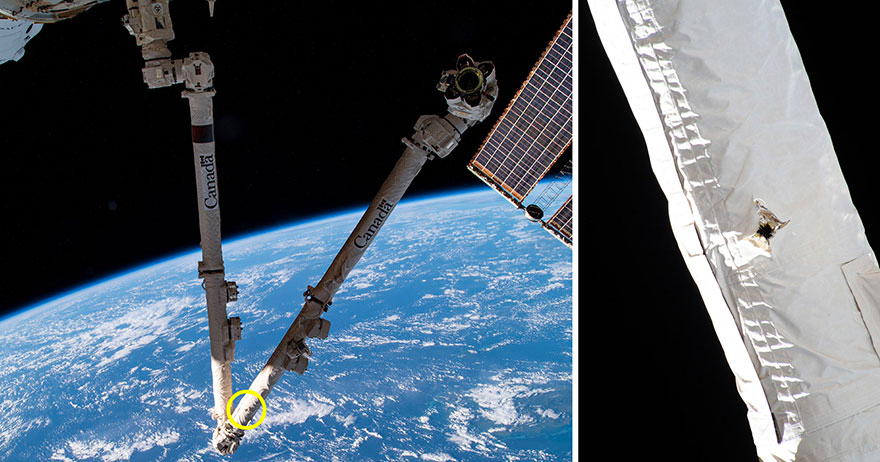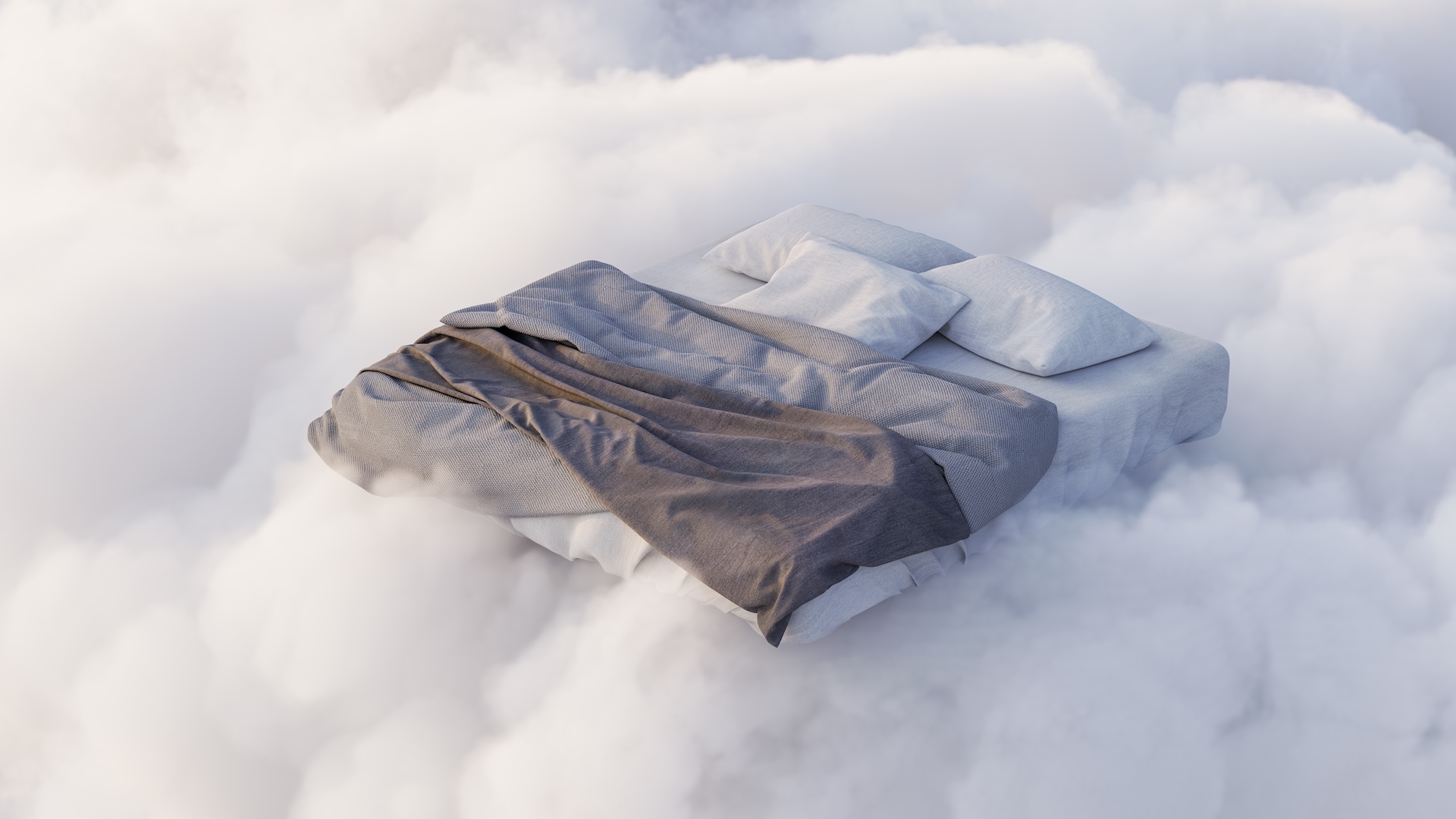International space station hit by orbital debris in 'lucky strike' (video)
A piece of space junk smacked into the robotic arm on the International Space Station, but near-term operations should not be affected, according to the agencies involved.
Robotic operators noticed a hole in the station's Canadarm2 provided by the Canadian Space Agency, which has been in service in orbit since 2001, during a routine inspection on May 12, the CSA officials said in a blog post Friday (May 28). Officials called the hole a "lucky strike" given the relatively small size of the arm, which is 57.7 feet (17.6 meters) long and has a diameter of just 14 inches (35 centimeters).
The size of the hole is not apparent in the pictures; the photo also doesn't make clear whether the debris went all the way through the arm. However, it does appear Canadarm2's role in keeping the space station properly maintained can continue without interruption, following careful work from both CSA and NASA.

"Results of the ongoing analysis indicate that the arm's performance remains unaffected. The damage is limited to a small section of the arm boom and thermal blanket," the CSA said in the blog post.
Canadarm2 was scheduled soon to move a Canadian robotic hand, Dextre, into a spot to replace a faulty power switchbox called the Remote Power Control module; CSA added that operation should not be affected whatsoever. Both Canadarm2 and Dextre are usually operated from CSA headquarters near Montreal, Quebec.
Orbital debris is a growing concern in low-Earth orbit due to the number of CubeSat launches arriving there in fleets for broadband service and other applications. (Indeed, SpaceX now sends batches of Starlinks to space almost every week, including on Wednesday, May 26.)
Some of these orbits intersect where the space station operates at an inclination of 52 degrees, roughly 200 miles (450 km) in altitude, but natural space dust and other objects are also a threat. "A number of tiny objects — ranging from rock or dust particles to flecks of paint from satellites — are … too small to be monitored," CSA said in the blog post.
Sign up for the Live Science daily newsletter now
Get the world’s most fascinating discoveries delivered straight to your inbox.
Orbiting crews have seen holes in space station solar arrays before, such as a "bullet hole" that Canadian astronaut Chris Hadfield tweeted about during his last mission in 2012-13. "Bullet hole — a small stone from the universe went through our solar array," Hadfield wrote in April 2013, suspecting the hole was caused by a tiny space rock called a micrometeoroid. "Glad it missed the hull."
The U.S. Space Surveillance Network keeps close track of at least 23,000 known softball-size or larger pieces of space debris in orbit; if any get close to the ISS, the station can alter its position slightly or NASA can instruct its crews to take shelter, which last happened in September.
Damage from space rocks or orbiting debris is one of the principal threats to ISS operations, along with natural aging (as parts have been in orbit since 1998). NASA combats the aging problem through regular maintenance and replacements.
The Canadarm series of robotic arms has near-iconic status within the country that created the technology. Canadarm2 graces the back side of the Canadian $5 bill, along with Dextre and an astronaut.
The original Canadarm, which served the space shuttle program between 1981 and 2011, deployed numerous satellites and space missions, such as the Hubble Space Telescope, with one of the arms later adapted into a robotic boom to assist with looking for broken tiles beneath the space shuttle. Dextre, for its part, launched in 2008 as a "handyman" for equipment or component installation and replacements, along with serving as a testbed for robotic technologies, the CSA says on its website.
More recently, the Canadian government announced plans for an advanced Canadarm3 in 2019 that would serve as a robotic, artificial intelligence-adaptive assistant on NASA's planned Gateway space station. Canada's robotic contributions allow the country to fly astronauts and science into space using U.S. hardware; the Canadarm3 pledge secured a promise from NASA to put a Canadian on the Artemis 2 moon-orbiting mission.
Follow Elizabeth Howell on Twitter @howellspace. Follow us on Twitter @Spacedotcom and on Facebook.

Elizabeth Howell was staff reporter at Space.com between 2022 and 2024 and a regular contributor to Live Science and Space.com between 2012 and 2022. Elizabeth's reporting includes multiple exclusives with the White House, speaking several times with the International Space Station, witnessing five human spaceflight launches on two continents, flying parabolic, working inside a spacesuit, and participating in a simulated Mars mission. Her latest book, "Why Am I Taller?" (ECW Press, 2022) is co-written with astronaut Dave Williams.











